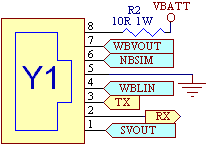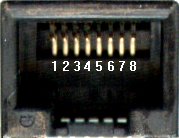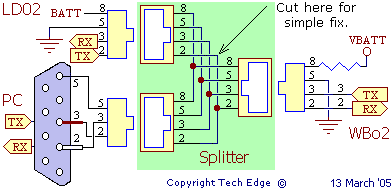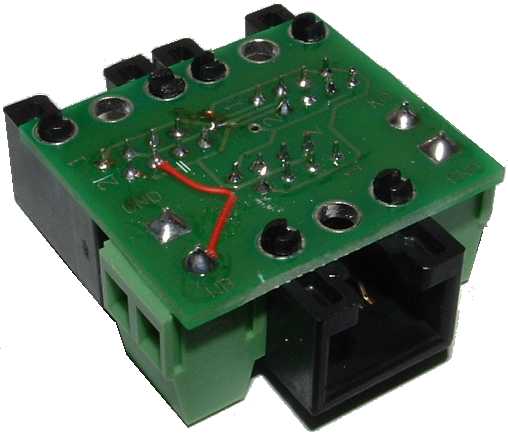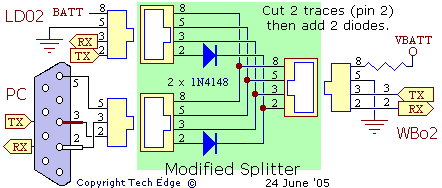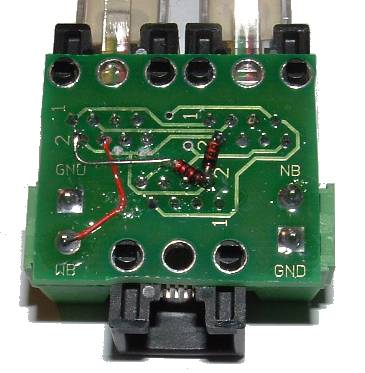RJ45 Splitter Fixes - WBlin to WB
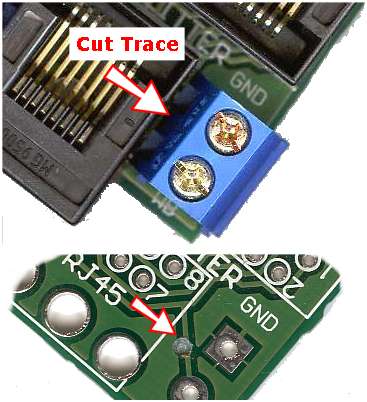

As noted above, a small number of RJ45 splitters may have been shipped with
the connector marked as WB (on the silkscreen) connected to the SVout
signal rather than WBo2's WBlin signal.
The fix is simple and fairly easy to perform, but first note that all splitters that have been
factory modified will have an extra insulated wire under the PCB, as shown in the image at right
(enlarged).
The image at left shows the first step of the modification
(enlarged)
where the existing PCB trace to the WB pin is cut with a Stanley® knife or box cutter,
or drilled out (as is shown on the lower bared PCB) using a small twist drill.
A wire must now be added from the solder side pad marked WB to pin 4 of the closest RJ45 socket.
We use small diameter wire wrap of various colours (red shown at right), and we also epoxy glue (two part 5 Minute Araldite®)
to anchor the wire securely to the PCB.
Also shown at right is the modification (a cut trace on the solder side) required for simultaneous LD02 & PC logging.
|

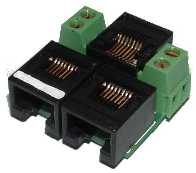 The RJ45 Splitter is primarily for use with 2A0/2A1,
2E0, and (the original)
2C0
to expand the single RJ45 (8 pin) connector into two.
The splitter also provides convenient access to the WBlin and NBsim signals.
The 2C0 unit (which brings out WBlin+/- & NBsim on a pluggable connector) has an additional RJ11 (6 pin)
connector that carries low speed serial (LSS) data which is different to the RS232 data on the RJ45 connector.
The RJ45 Splitter is primarily for use with 2A0/2A1,
2E0, and (the original)
2C0
to expand the single RJ45 (8 pin) connector into two.
The splitter also provides convenient access to the WBlin and NBsim signals.
The 2C0 unit (which brings out WBlin+/- & NBsim on a pluggable connector) has an additional RJ11 (6 pin)
connector that carries low speed serial (LSS) data which is different to the RS232 data on the RJ45 connector.

